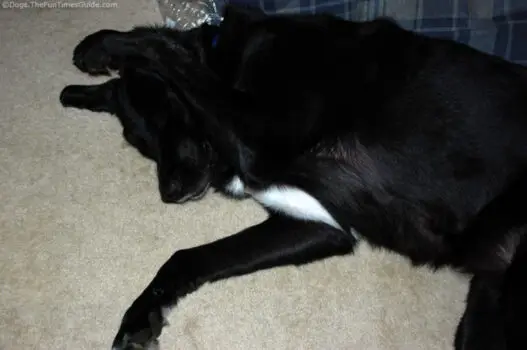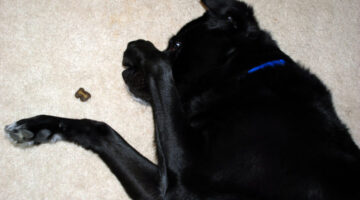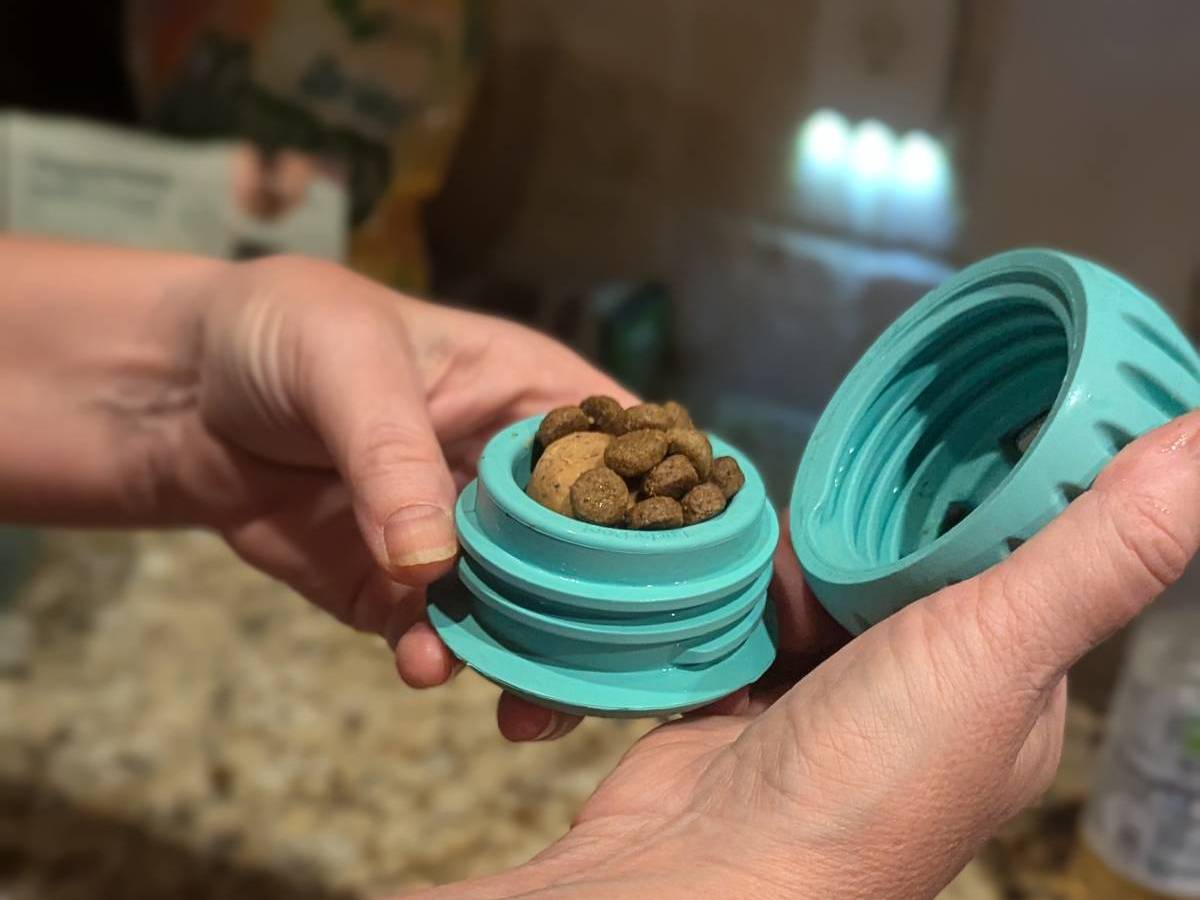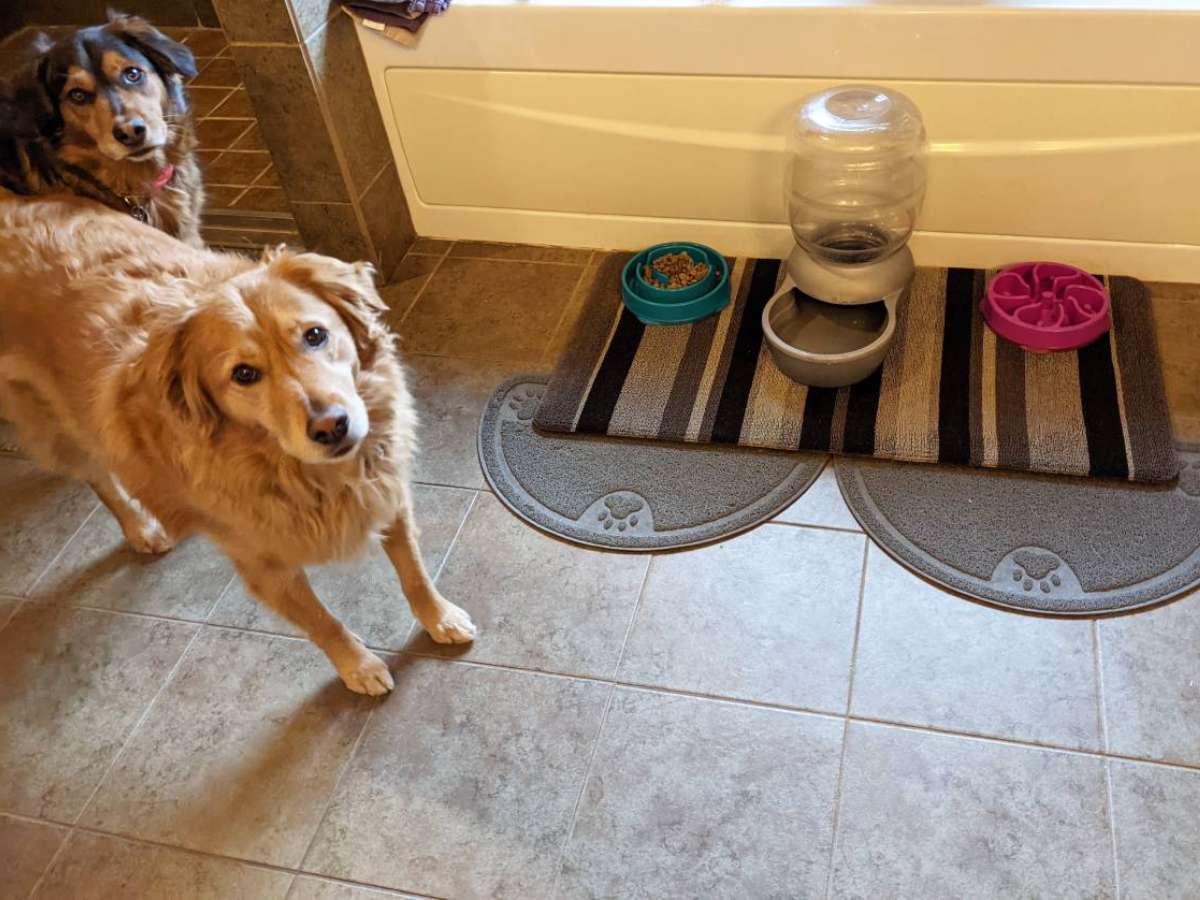This is a fun dog trick… and I think it’s our dog’s all-time favorite one to do.

He’s been doing it for well over a year now — both on command, and on his own (when he’s trying to be especially cute or get our attention). He knows this game of peek-a-boo goes a long way with us
We actually call it “being shy” but you would probably impress your friends better if you called it playing “peek-a-boo” or something cute.
Here’s how we taught our dog to play peek-a-boo on command…
It was extremely simple actually…
First, Give It A Name
When our dog was stretching out and relaxing around the house, we started to notice that he frequently pawed at his ears or eyes — as if to rub his own ears or get the gunk out of his eyes in the morning.

Then came the day we started to put a name to that behavior. We called it “shy”, because he looked like he was trying to hide his eyes — like he was embarrassed or something. Even though he wasn’t really.
Anyway, any time we’d catch him doing this behavior on his own, we started to say, “Are you being shy?!”… “Are you a shy dog?!”…
Of course, at first he didn’t have a clue what we were talking about. But in order for this trick to work, we had to be consistent and keep calling attention to “shy” or “peek-a-boo” every single time we saw him doing this (pawing his eyes, nose, or ears with his front foot).
How To Get Your Dog To Be “Shy” On Command
After about a week or so of that — just giving the behavior that he was already doing on his own a name — then we tried to get him to do it on command.
This, too, was easier than I initially suspected it would be.
With a few of our dog’s favorite treats hand, we broke it down into 2 steps:
Step #1: Get your dog to lie down on his side (so one paw remains flexibile and can reach his eyes).
Step #2: Get your dog to a) put his paw over his eyes; and b) keep it there until you say “okay” and reward with a treat.
This took a bit longer. There were a couple of weeks of mediocre results, until that day it just “clicked” with him. He realized what we were after and how he got the treat only when he delivered the behavior on command. From this point on, he would be “shy” so much just to get our attention or make us laugh (or get a treat), that we stopped giving the treats so much, and now only give them every few times rather than every single time.
For us, breaking the behavior into the 2 steps above really helped to shorter the learning curve for him… it became more of a “process,” and he eventually learned what we were after.

So, for Step #1 mentioned above, we would simply encourage him to lie on his side — at his own pace. At first he was reluctant to just lie down and then immediately roll over. We waited patiently, and rewarded with a treat each time he would lie down and then eventually roll over onto his side. Do just that behavior for another week or so — lie down on command, then roll slowly onto your side. If he can stay there until we say “ok”, then he gets a treat.
For Step #2 above, after he had the “lie on your side and stay there” down… we began to add his paw into the equation.
Keep in mind, throughout this time — even when we weren’t in these training sessions — we were still using the name for this behavior that he does on his own a lot (“shy”) any time he put his paw anywhere near his eyes, nose, or ears. And he always got a treat for it — when he did it on his own.

At first, while the dog was lying on his side, we would have to slowly lift his paw and gently place it on his nose. Of course, he didn’t want to keep it there long, so we would quickly exclaim, “GOOD shy!” even for the millisecond that his paw stayed on his nose. We repeated this paw-on-the-nose move, each time trying to increase the length of time that he would keep his paw on his nose until we said “ok” and let him get the treat we’d placed by his nose.

That, my friends, is all it took. Slow, repeated movements on our part — along with a good deal of patience. And constant rewarding for anything that resembled the behavior — either on his own, or during the daily training sessions.
By 2 weeks, he had it down, and “being shy” immediately became one of his most favorite tricks to do.
It’s quite an attention-getter when friends are visiting! A dog in such a vulnerable position and being so cute really scores big points — both, with your dog and your friends.




